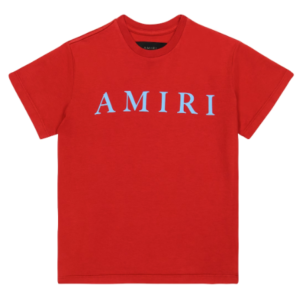Streetwear has become a dominant force in the fashion industry, and one of its most iconic pieces is the streetwear jean. What began as a subculture movement has since evolved into a fashion staple that transcends social and cultural boundaries. The journey of streetwear jeans, from their roots in urban neighborhoods to the runways of high fashion, reflects broader shifts in society, style, and self-expression.
Origins in Subculture
The origins of streetwear jeans can be traced back to the 1970s and 1980s, when youth subcultures in cities like New York and Los Angeles began amiri star jeans to embrace a distinctive style that mixed elements of skate, punk, and hip-hop fashion. Jeans were a central part of this aesthetic because of their practicality, durability, and association with rebellion. Early streetwear pioneers, particularly within the skate and hip-hop scenes, favored baggy, loose-fitting jeans that allowed for movement and comfort. In the skateboarding world, for instance, skaters needed flexibility to perform tricks, while in hip-hop culture, oversized jeans became a symbol of defiance against the restrictive norms of mainstream fashion. Denim became a canvas for individuality, often embellished with patches, graffiti, or custom designs to reflect personal style.
Rise of Hip-Hop Culture
As the influence of hip-hop culture grew in the late 1980s and early 1990s, so did the popularity of streetwear jeans. Artists like Run-DMC, Tupac Shakur, and Notorious B.I.G. played a pivotal role in popularizing oversized denim styles. Baggy jeans, often paired with oversized t-shirts and sneakers, became synonymous with the streetwear look. At this time, jeans began to symbolize more than just a fashion statement. They represented the voice of a generation that sought to challenge societal norms. Hip-hop culture, with its roots in marginalized communities, used fashion as a form of resistance and self-expression. Streetwear jeans became a way for individuals to communicate their identity, their environment, and their unique sense of style.
Streetwear Brands Take Hold
In the 1990s, streetwear brands began to emerge, fueling the popularity of streetwear jeans. Brands like Stüssy, Supreme, and FUBU helped red and white amiri shirt bring street culture into the mainstream. These labels embraced the authenticity of urban fashion, and jeans became a key item in their collections. Stüssy, for example, was one of the first brands to blend skate culture with street fashion, while FUBU (For Us By Us) specifically catered to the African American community, emphasizing the importance of representation in the fashion world. These brands created jeans that not only aligned with the subcultural aesthetics but also offered a sense of exclusivity and individuality. Denim designs began to evolve, with brands experimenting with fits, washes, and embellishments. Distressed, ripped, and faded jeans became popular, adding to the rugged and rebellious nature of streetwear. This period also saw the rise of limited-edition drops and collaborations, which added to the allure of streetwear jeans as coveted fashion items.
The Mainstream Breakthrough
By the early 2000s, streetwear jeans had made the leap from niche subcultures to mainstream fashion. The rise of celebrity endorsements and collaborations with luxury fashion houses propelled streetwear into the global spotlight. Artists like Kanye West, Pharrell Williams, and A$AP Rocky became style icons, blending streetwear with high fashion and making streetwear jeans a must-have item for fashion-forward individuals. Luxury brands took notice of this shift and began incorporating streetwear elements into their collections. High-end designers like Louis Vuitton, Gucci, and Balenciaga began experimenting with denim styles that were influenced by streetwear, leading to the creation of luxury streetwear jeans. This collaboration between streetwear and high fashion marked a turning point in the evolution of streetwear jeans, as they became accepted in both casual and formal settings.
The Evolution of Fit and Style
As streetwear jeans gained mainstream acceptance, their styles continued to evolve. While baggy and oversized jeans were dominant in the early years, the 2010s saw the rise of slimmer fits and more tailored designs. Skinny jeans once considered the antithesis of streetwear, began to merge with streetwear aesthetics, with brands amiri shoes pink like Off-White and Fear of God offering high-end takes on street-inspired denim. Distressed and ripped jeans remained popular, but new trends emerged, including raw denim, selvedge denim, and jeans with unique washes and treatments. Streetwear brands began to focus more on the craftsmanship of their jeans, offering premium fabrics and intricate detailing. Collaborations between streetwear labels and denim manufacturers further elevated the status of streetwear jeans as both a fashion statement and a high-quality garment.
Streetwear Jeans in the Digital Age
In the digital age, streetwear jeans have continued to evolve, driven by the influence of social media, e-commerce, and digital marketing. Platforms like Instagram and TikTok have made streetwear more accessible to a global audience, allowing trends to spread rapidly and creating a new generation of streetwear enthusiasts. Online communities and reselling platforms have also contributed to the popularity of limited-edition streetwear jeans. Hype culture, where demand for exclusive items far exceeds supply, has led to a thriving resale market for streetwear denim. Brands like Supreme and BAPE have capitalized on this trend, releasing limited-edition jeans that sell out within minutes and are later resold for exorbitant prices.
Sustainability and Streetwear Jeans
As the fashion industry faces increasing scrutiny over its environmental impact, streetwear brands have begun to address sustainability in their denim production. Many brands are now exploring eco-friendly practices, such as using organic cotton, reducing water consumption, and promoting circular fashion through recycling and upcycling initiatives. Sustainability has become a key consideration for consumers, particularly among younger generations who are more conscious of their environmental footprint. Streetwear jeans, once associated with fast fashion and mass production, are now being reimagined with a focus on longevity and ethical production. This shift reflects the broader evolution of streetwear from a rebellious subculture to a responsible and conscious movement.




